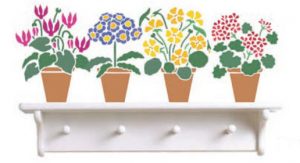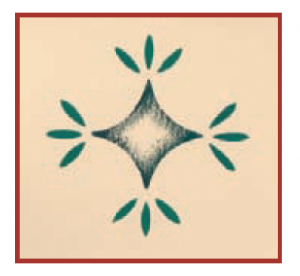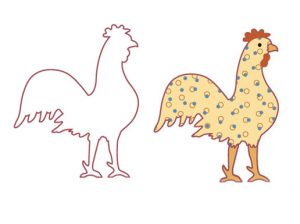Steps to First-Class Stenciling
It’s All In The Preparation
Begin with a clean surface. If you are stenciling on fabric, it is best to prewash and iron flat. Pre-washing the fabric removes any fabric coating. Always follow the paint manufacturer’s instructions.
For a project such as floor cloths or items that will take a lot of direct wear, it is best to protect stencil paint with several light, even coats of acrylic varnish.
We use acrylic paint for most of our stencil projects. This is the paint you will find mentioned in our instructions.
Design Considerations
Our single overlay stencils are created with ‘bridges’ of negative space between the painted shapes. These bridges give your finished project a traditional old world stencil look. If you want your project to have a more hand painted look, simply use a small brush and paint in the bridges. A few of our stencils are double over stencils and these have guilds holes for exact placement. Simply mark with a pencil and match the marks when placing your second stencil.
The most important key to successful stenciling is to use a very small amount of paint when loading the brush. Excess paint will seep under your stencil. For happy stenciling, less is more.








